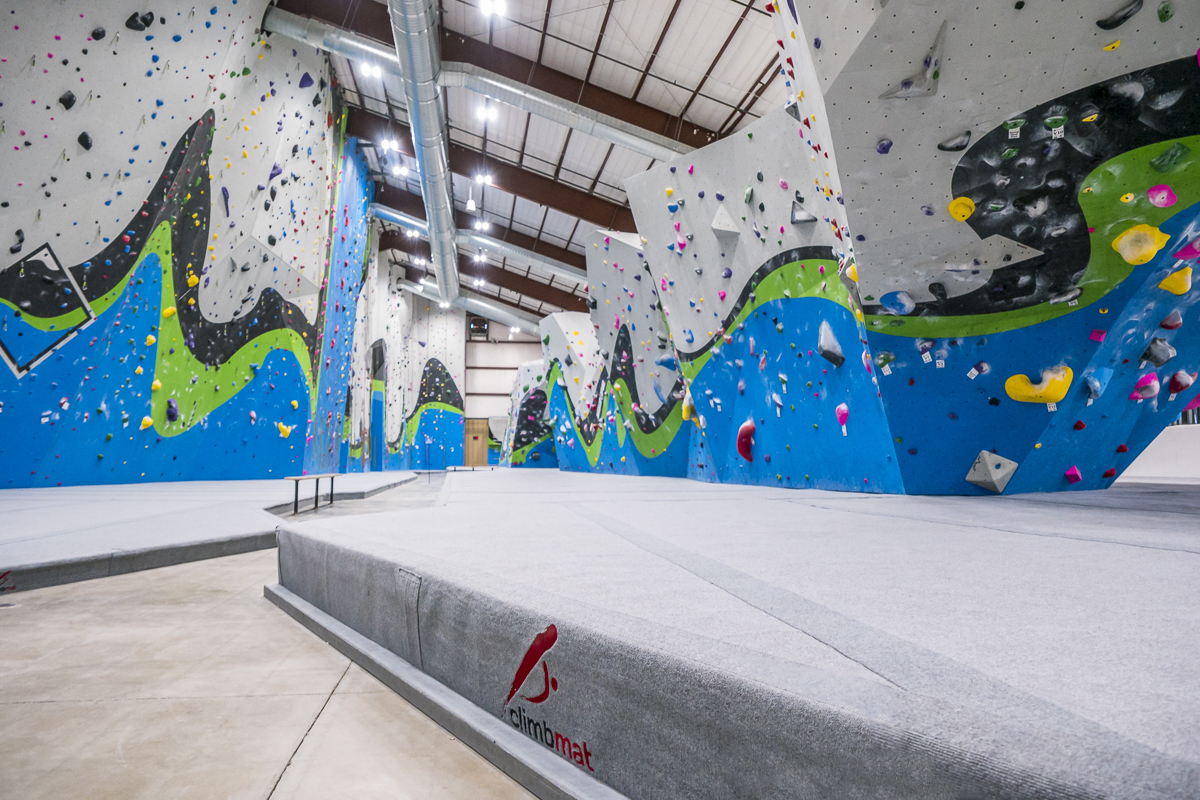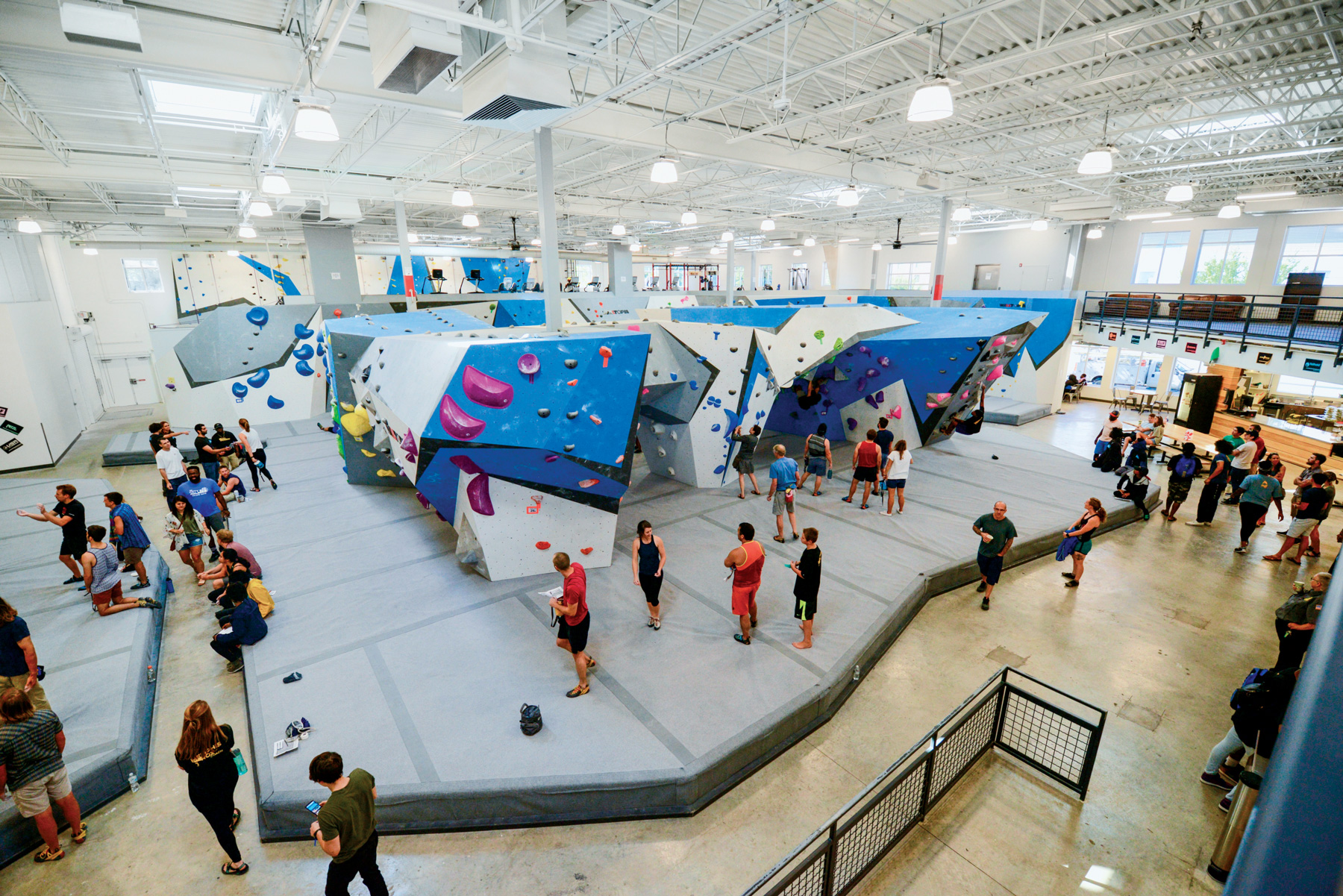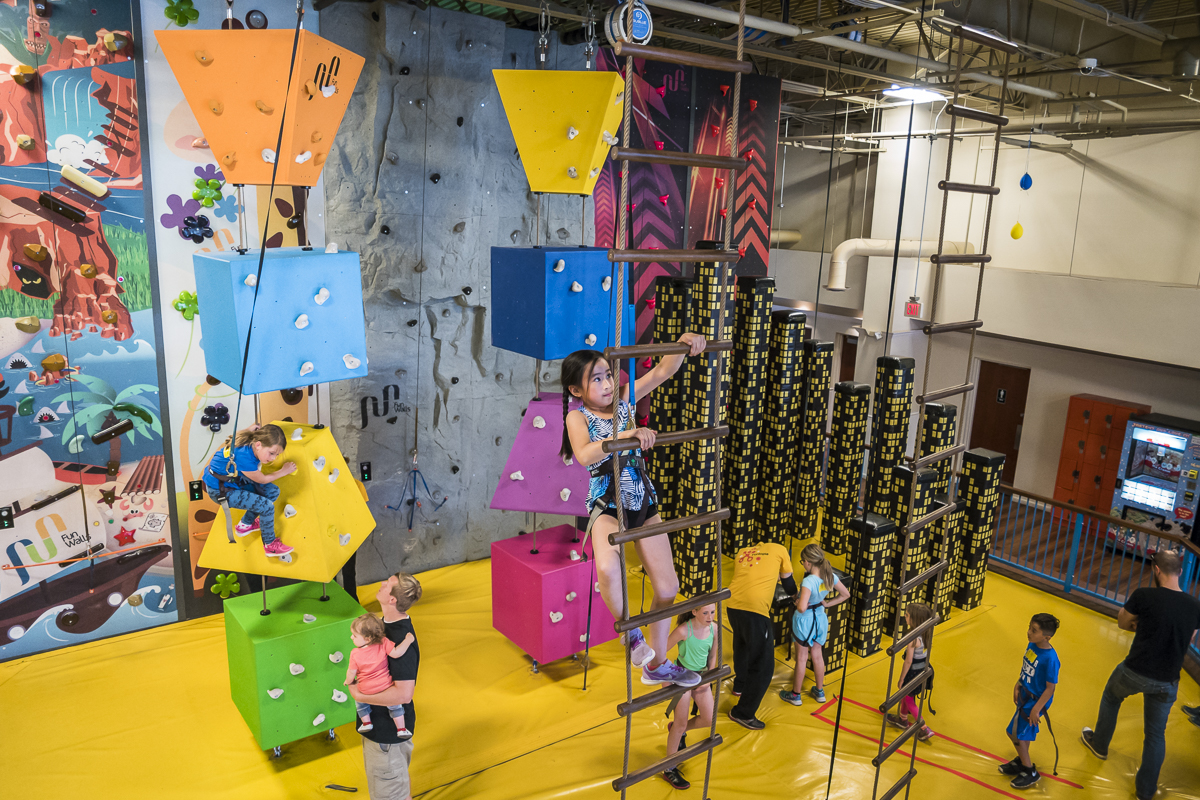The Importance of Flooring
A perfect example of how valuable safety flooring is can be taken from indoor boulder climbing where it is mandatory in most parts of the world, to put some impact-absorbing material underneath the artificial climbing structure. The purpose of the impact-absorbing flooring for bouldering is to be able to accommodate landings, when falling from at least the top of the boulder, and minimize injuries. The flooring solution can be an air cushion, shingle, or foam safety mat. Bouldering being the discipline where falling is a part of the sport, it is safe to say that these options are perfectly valid for high wall Climbing and Active entertainment facilities as well.
The Most Popular Choice: Foam Safety Mats
Simply put, a foam safety mat is several layers of foam encapsulated together in a fabric bag (PVC coated, polyester fabric, carpet, ballistic nylon, etc.). When designing and purchasing a foam safety mat, several things should be taken into account (we will continue the example with as if working on a bouldering project):
1. First, the impact area, which is the surface on which the user lands after falling from the boulder.
2. Second, mat thickness should be able to absorb a fall from at least the top of the boulder.
3. Third, the material of the cover, which is the top surface on which the climbers walk, sit, and most importantly fall.
Customers can choose between “Vinyl,” “Carpet,” and “Ballistic Nylon.” “Vinyl” has been the most popular material of choice because of its elasticity and tensile strength but since it is hard to clean and does not hold the chalk, many users prefer “Carpet.” In fact, the best quality and results are achieved when using “Vinyl” and “Carpet” together since “Carpet” on its own can be brittle and exhibit inelastic deformation.
4. Last but not least we have mat stiffness, which is the most discussed element when we talk about boulder mats.
A lot of factors can contribute to the stiffness of a mat, such as cover material type and stretchiness, type of construction, quality of the foam and its density, etc.
We contacted Bozhidar Oreshkov, Ph. D., Head of R&D of Climbmat – one of the top manufacturers of flooring solutions for Climbing gyms and Active entertainment facilities, and asked him to share some insights.
“All of our products are on the lower half of the deceleration (impact force) range, allowed by the European and Australian standards. However, to some climbers, even our softest mats could feel hard. Thus alongside quantifying the forces experienced by climbers and minimizing the possibility for injuries, we advise our customers to educate all climbers on proper ways of falling on boulder mats, to further minimize the chances for injury.”
“When it comes to lead and top rope flooring, a common practice in Europe and Asia is to not use protection flooring since it emulates the outdoor rock climbing experience. In our opinion climbers should be protected at all times since accidents, unfortunately, do happen often. It is true that in contrast to boulder climbing where climbers fall all the time, in rope climbing a fall from up to 3m should rarely occur, and falls between 5 to 15 m should not occur at all. But theory is different from reality.”
In theory, climbing walls and high ropes sessions should be the safest of all ‘adventurous’ activities. There should be no uncertainty of outcome. The environment is artificial and controlled, the equipment is well-engineered for the job and there are tried and tested auto-belay systems available to protect all involved.
Human Error Changes the Equation
High-risk situations where a climber starts his ascend without attaching himself to an auto-belay, happen every day. Happily, accidents are rare but they should not really happen at all.
When designing operations and choosing equipment, we need to focus on reducing the possible negative impact of human factors. It is crucial that wherever possible, at every critical point in the system, we assess the risks and plan for additional forms of safety.
Oreshkov adds on: “Many gyms do not have protection flooring due to the lack of standards, but even the ones that require flooring, use up to 10cm mats which is not good enough protection for falls from above 3 m.”
Considerations When Designing a Rope Climbing Gym
Boulder Mat in Memphis Rox, Memphis, TN, USA
Rope climbing gyms are a bit different from boulder gyms. The impact area recommended by most standards can limit injuries from a fall from the first anchor point but it is recommended that an extended perimeter is covered for a safer experience at higher points.
Mat thickness is an important factor for which there is no set standard but a recommendation for an upper limit of 10cm is common. Since 10cm is not nearly sufficient, the suggestion is thicker mats with the same static stiffness as the thinner ones.
Lastly, we have the impact-absorbing capacity of the mat which is strongly dependent on the thickness and stiffness of the material or the combination of materials used. As the popular saying goes “it is not the fall that kills you it is the sudden stop.”
Considerations When Designing an Active Entertainment Facility
One More Life Mat in Funtopia Glenview, Chicago USA
There is one significant difference in Active entertainment facilities, compared to Climbing gyms, that must be taken into account:
The users.
While in climbing gyms users are predominantly adults of different ages, in Active Entertainment facilities the majority of users are young kids. Thus we need to account for their lack of experience and their inattentive personality.
That in combination with the increased application of auto-belay devices in Active entertainment inevitably leads to a higher chance for human error. Therefore we have to adjust our design considerations in the following ways.
First is the impact area. It needs to be extended as much as possible. Wherever there is a possibility of a fall, safety flooring needs to be added. This should also extend to the vertical surfaces, where we could have a potential impact. There is a foam safety padding that needs to be added.
The second is the mat thickness and stiffness. Similarly, it should be able to absorb a fall from at least the maximum fall height.
Climbing flooring is designed and tested for adults. Kids being smaller and lighter, can tolerate much lower impact forces than adults. Thus the mats need to be both softer and thicker, wherever it is possible.
In short, flooring for Active Entertainment facilities needs to be significantly safer and softer, compared to Climbing flooring.
A Tip from Climbmat
Any attraction that does not have an incorporated belay system, should have safety flooring similar to that in a boulder climbing gym, and any that does, should have rope climbing safety flooring.
Another way to differentiate these two types of attractions is by evaluating the maximum possible fall height – the limit of the only applicable safety standard – EN1176/EN1177 (IMPACT ATTENUATION FOR PLAYGROUND SURFACING) and similar national standards around the globe.
If the maximum possible fall height is below 3 m, then usually no belay system is required – thus we look into boulder climbing type of flooring. If it is above 3 m – belay system – rope climbing flooring.




